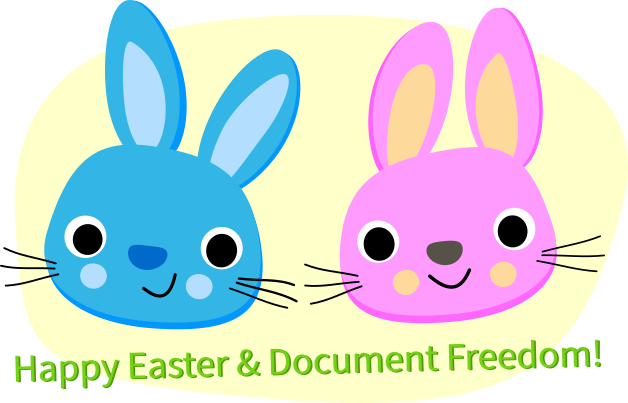


Document Freedom is based on Open Formats, such as ODF or Open Document Format, the ISO standard native file format of LibreOffice and other FOSS office suites.
When you save a document on your computer, it is stored in a computer file. Whether it is a text file, a picture, a video or any other kind of work, it is saved with a specific coded structure, known as the file format.
To be able to share data, software programs must be able to communicate with each other. It implies that no barrier whatsoever may hinder the exchange of data and the related write or read operations. For such a seamless exchange to be possible, software programs are required to be “interoperable”.
Interoperability is guaranteed when it relies on open standards, i.e. public technical specifications, freely usable by everyone, without restriction nor compensation, and maintained by an open decision-making process. File formats based on these open standards are “Open Formats”.
Where software interoperability is set aside, or if a program editor does not give access to the key information for interoperability or if the file design recipe is kept undisclosed, or if the file design recipe is available but is not followed by the program, file formats are considered to be “closed” and do not allow interoperability. For a software user, choosing between an Open File Format or a closed one has a deep impact on the ownership of and the access to his/her own data and their availability over time.
Free Software are programs that offer four freedoms to users: the liberty to copy and to distribute the software to others, the right to use it for every kind of use, the right to study it in order to know its functioning, and the right to modify in order to improve it. Free Software designers usually favour existing Open Formats, and contribute to their evolution.
Furthermore, as Free Software developers publish their source code (the software design recipe), recording methods and format descriptions used are de facto distributed with the software.
Open Formats and Free Software share the same goals: to be at the service of everyone and to ensure users the full ownership and control over their data as well as perennial availability of those data.
Let’s celebrate Document Freedom Day 2020 by sharing with other people the information about the importance of Open Formats. Create your own DFD Dove.
[This text is almost entirely based on a document developed by April (https://www.april.org/en) for a previous Document Freedom Day, and released under Creative Commons Attribution Share Alike 2.0 License]